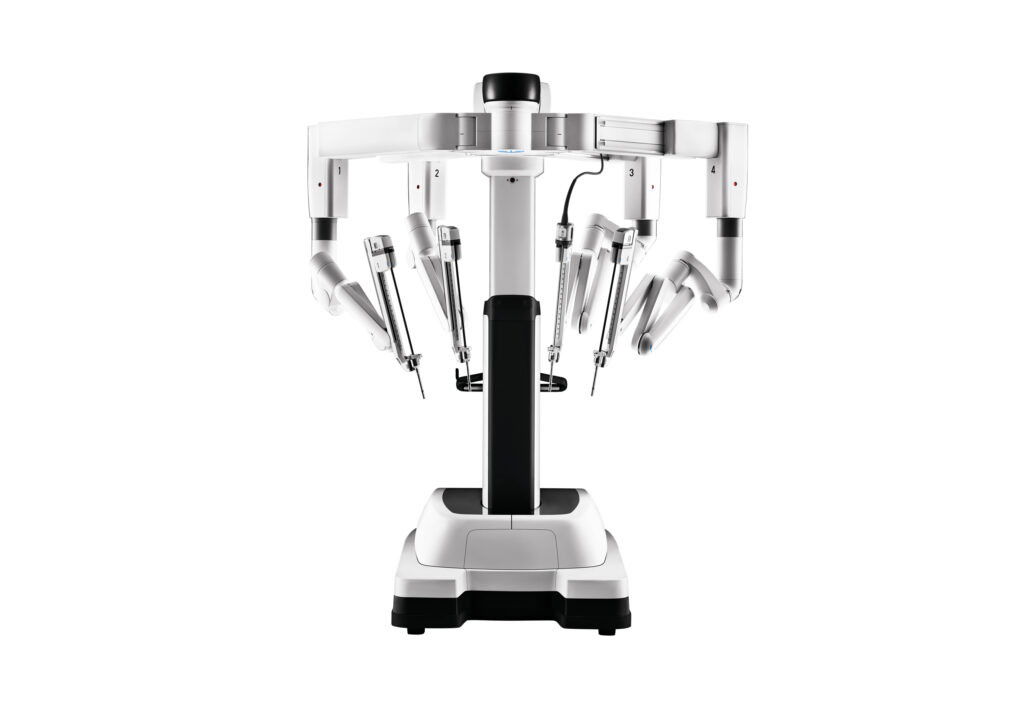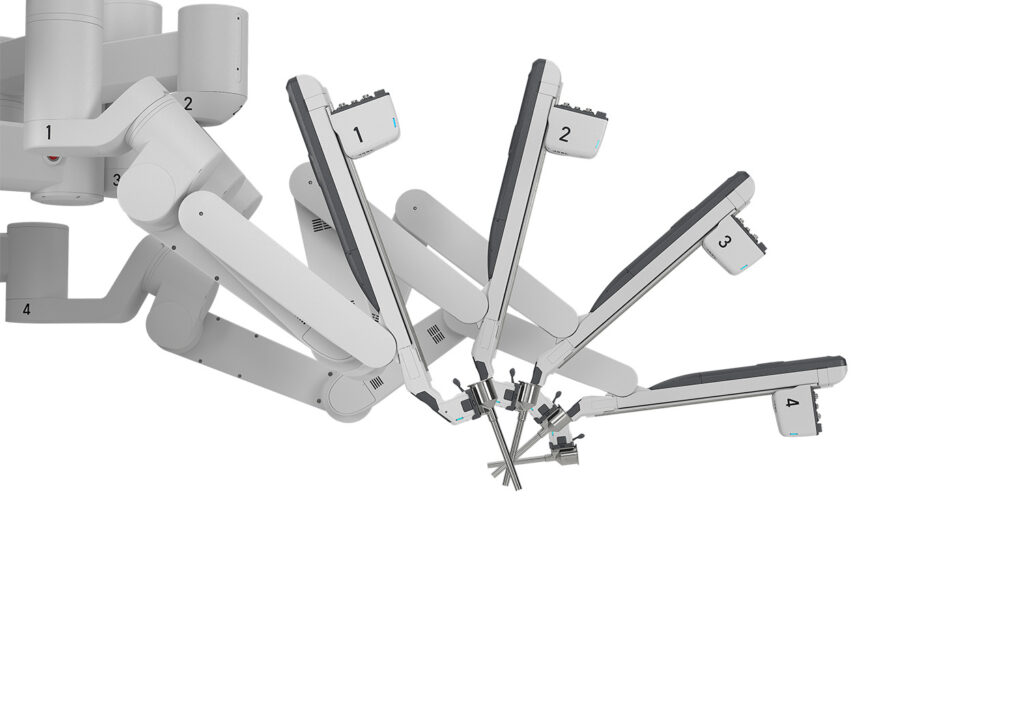Soft Tissue Robotic Surgery
Robotic surgery, also called robot-assisted surgery, allows doctors to perform many types of complex procedures with more precision, flexibility and control than is possible with conventional techniques. Robotic surgery is usually associated with minimally invasive surgery — procedures performed through tiny incisions. It is also sometimes used in certain traditional open surgical procedures.
The most widely used clinical robotic surgical system includes a camera arm and mechanical arms with surgical instruments attached to them. The surgeon controls the arms while seated at a computer console near the operating table. The console gives the surgeon a high-definition, magnified, 3D view of the surgical site. The surgeon leads other team members who assist during the operation.


Benefits of Robotic Surgery:
- Smaller incisions with minimal scarring
- Shorter hospital stay.
- Faster recovery
- Less pain
- Decreased need for narcotic use
- Less blood loss
- Fewer complications
- Improved cancer control
What are the Steps for Robotic Surgery?
- A small needle is placed in the abdomen and the abdominal cavity is insufflated with CO2 to allow the surgical team to gain access to the abdomen.
- Small incisions are then made to place tubes into your abdomen.
- After visualization is gained the da Vinci robot is attached to the small tubes.
- After the robot is docked/attached, your surgeon and surgical team are ready to get to work.
- Beside the surgical table your surgeon works at a console, this is the control center that allows the surgeon to control the da Vinci robot.
- Together your surgeon and surgical team will coordinate to complete your surgery.
- Once the Robotic portion of your surgery is done, your surgeon will remove the small tubes.
*These small incision sites will then be covered with surgical glue
Robotic Surgery We Offer:
- Cardiothoracic
- Urology (kidney, bladder and prostate)
- Abdominal wall and groin hernias
- Gastroesophageal reflux disease (GERD)
Meet the Surgeons:

- Vice-Chairman, Department of Surgery
- Director, Minimally Invasive Surgery
- Director, Robotic General Surgery
- Director of Bariatrics
- Foregut Surgery

- General Surgery
- Foregut Surgery
- Bariatric Surgery
- Colorectal Surgery










Dr. Marc Colton







Dr. Jeff Heitmann







